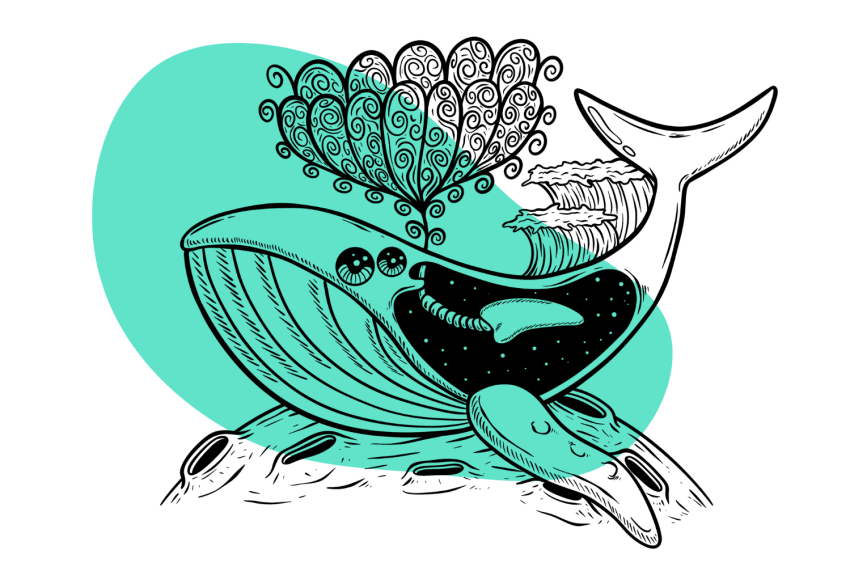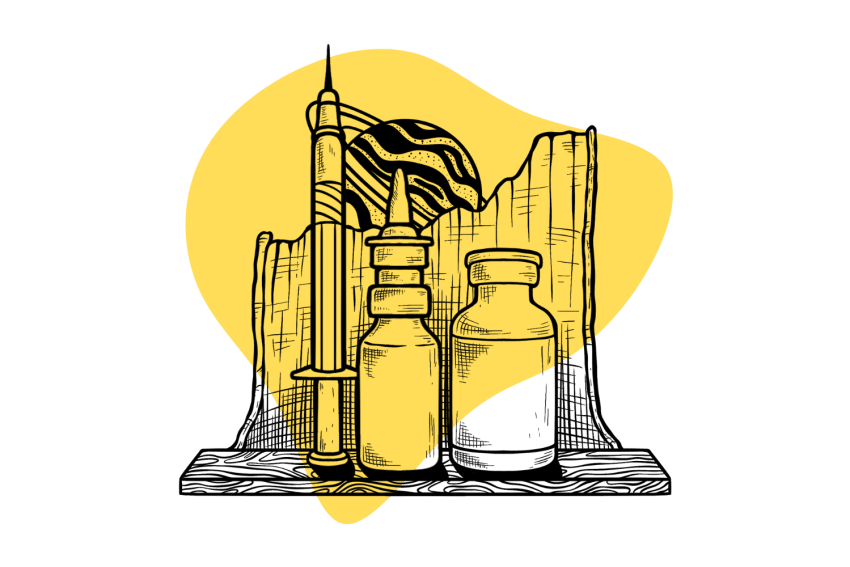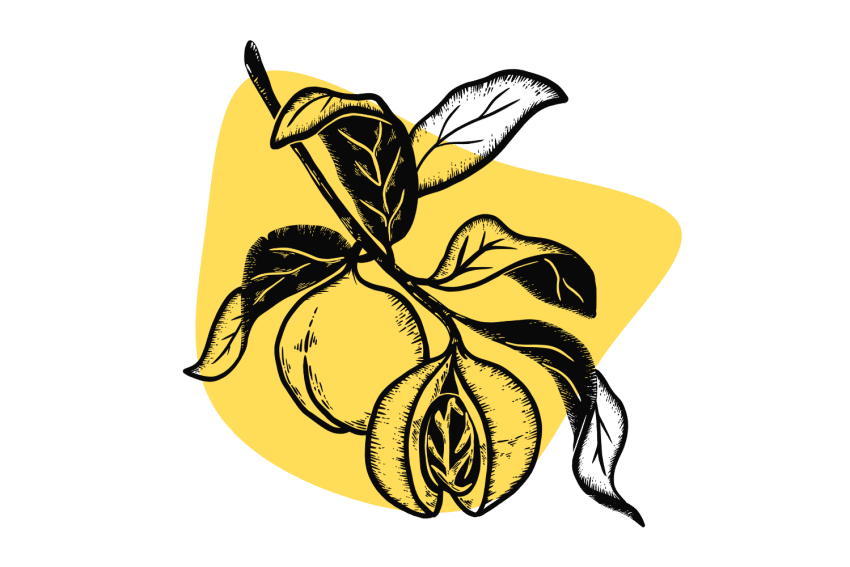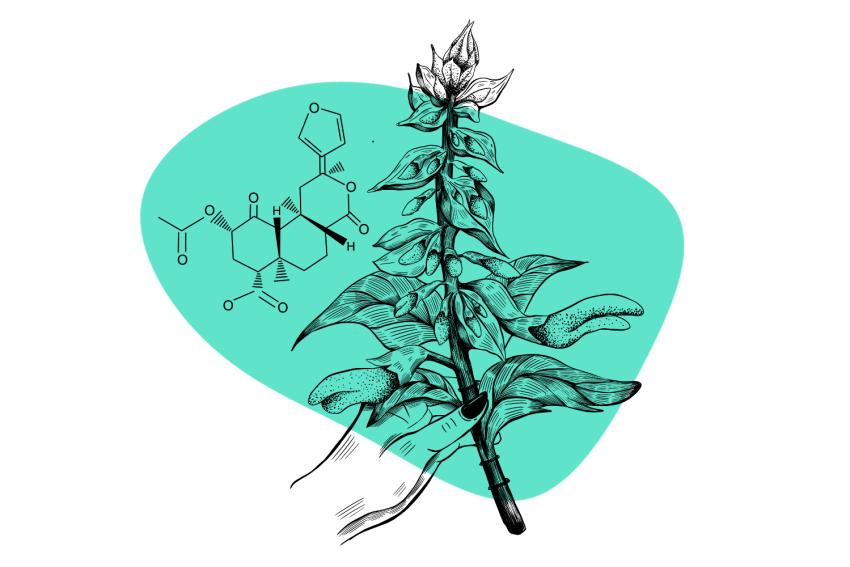GHB: A Definitive Guide and Safety Information
There are plenty of reasons why GHB is so popular — but there’s a dark side that can’t be overlooked.
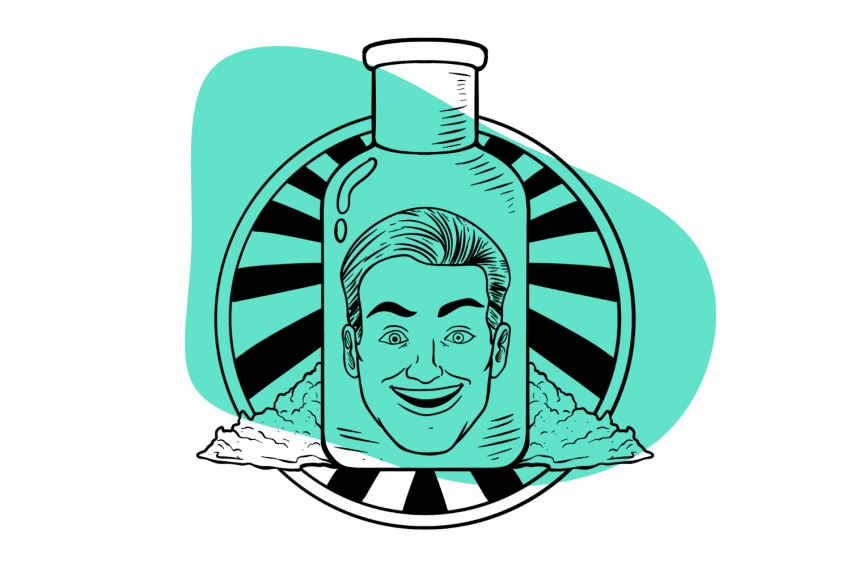
Along with MDMA, GHB (gamma hydroxybutyrate) has garnered a reputation as a “party drug,” — but it carries some notable risks.
In this article, we’ll take a look at GHB from a subjective viewpoint to provide you with the most accurate and unbiased information possible. We’ll include information on the effects, normal dosage, the risks of taking it, and much more.
What is GHB?
GHB stands for gamma-hydroxybutyrate. It’s a popular party drug for its relatively low cost and desirable psychoactive effects that are often described as a combination of MDMA and alcohol.
GHB has no smell, no color, and you only need a little bit for a powerful dose. This makes it easier to smuggle into various shows or festivals than many other drugs.
The problem is that because GHB is so strong, it’s not hard to overdose. The consequences of overdosing on GHB can be fatal. Vice referred to GHB as “the most dangerous club drug in the world.”
In larger doses, GHB can cause blackouts and increase suggestibility. As an unfortunate byproduct of this effect, G is often used as a date rape drug. Its lack of any color and taste makes it easy to slip into someone’s drink without being detected. GHB is one of the reasons why it’s so important to never leave a drink unattended, even for just a few seconds.
With that said, GHB is most often used (consensually) as a recreational drug.
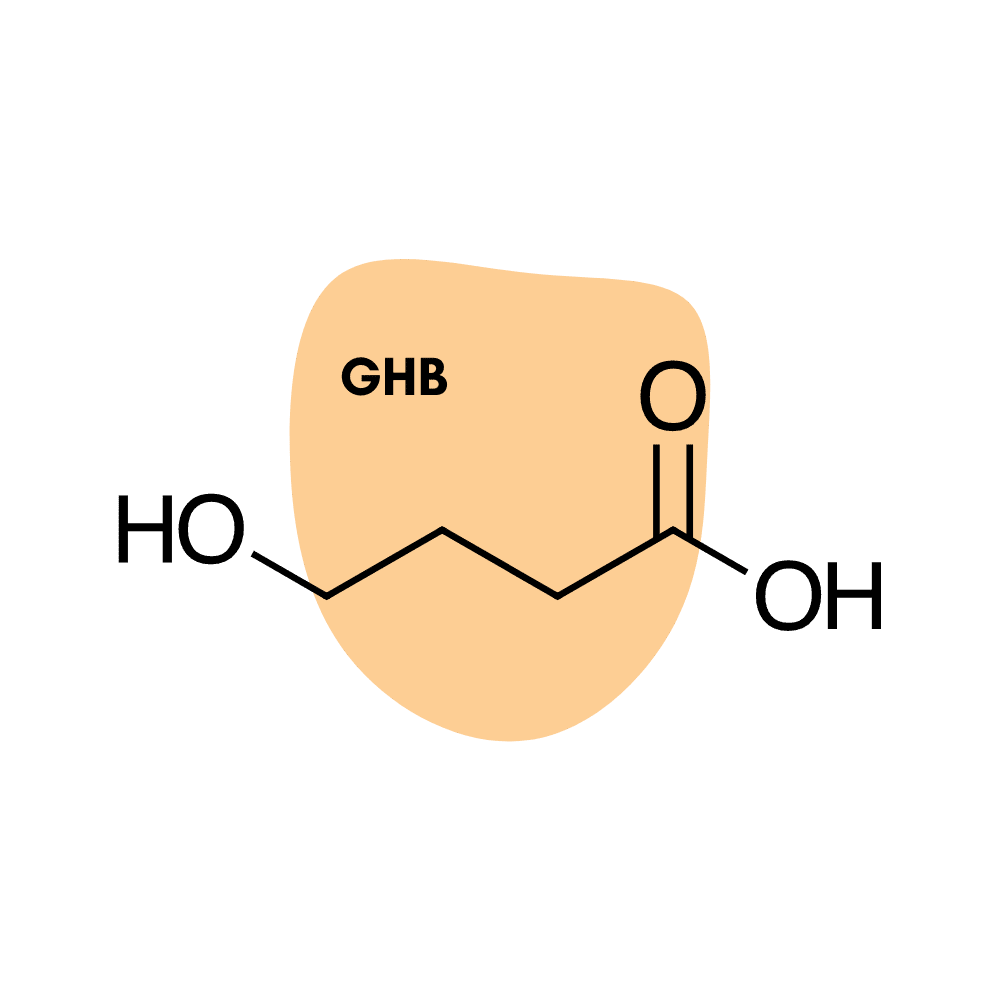
GHB Specs & Technical Details:
| Chemical Name | Gamma-hydroxybutyrate |
| Level of Risk | Medium-High |
| Street Names | G, Grievous Bodily Harm, Fantasy, Liquid Ecstasy, Liquid X, Liquid E, Soap, Blue Nitro, Fishies, Juice, Georgia Home Boy, Cherry Meth, Scoop, Goop, Gina, Georgia, Easy Lay, Geeb, Sleep-500 |
| Most Common Side Effects | Excessive sweating, nausea, drowsiness, loss of consciousness, vomiting, headaches, hallucinations, memory loss, confusion |
| Duration of Effects | 1-2 hours |
| Legality | Illegal (Schedule I drug in the US) |
Trip Sitter Safe Trip Checklist: GHB-Edition
- 🐍 I understand why psychoactive compounds should be treated with respect
- ⚖️ I’m familiar with the laws for GHB in my country & state
- 🍄 I’m familiar with and confident in the dose I’m taking (don’t exceed 1.5 mg/mL)
- 🧪 I’ve tested a sample of the substance I’m using with a drug-testing kit
- 💊 I’m not mixing any alcohol, drugs, medications, or other substances with GHB
- 🏔 I’m in a safe & comfortable environment with people I trust
- 🐺 One of the members of my group is responsible and sober (AKA a trip sitter)
- 📆 I’m in a sound & healthy state of mind
- ❤️ I don’t have any underlying health issues
- 👭 Use the buddy system — GHB can remove your inhibition and allow you to make unsafe decisions, always stay with people you trust, and never go out alone
- 👂 Protect your hearing — music can be intoxicating while on GHB, but protect your hearing and bring ear protection before you go out to a club or concert
What’s The Dose of GHB?
The most common dose range reported for GHB is between 0.5 and 1.5 mL.
These dosages are very small. A difference of just 1 mL of liquid could be enough to cause an overdose. This is one of the reasons why this drug is so dangerous. Once people are already intoxicated, it’s very easy to misjudge a dose — resulting in serious consequences.
Most users remain at or below the 1 mL range as higher dosages can cause unwanted side effects, including blackouts, nausea, and more.
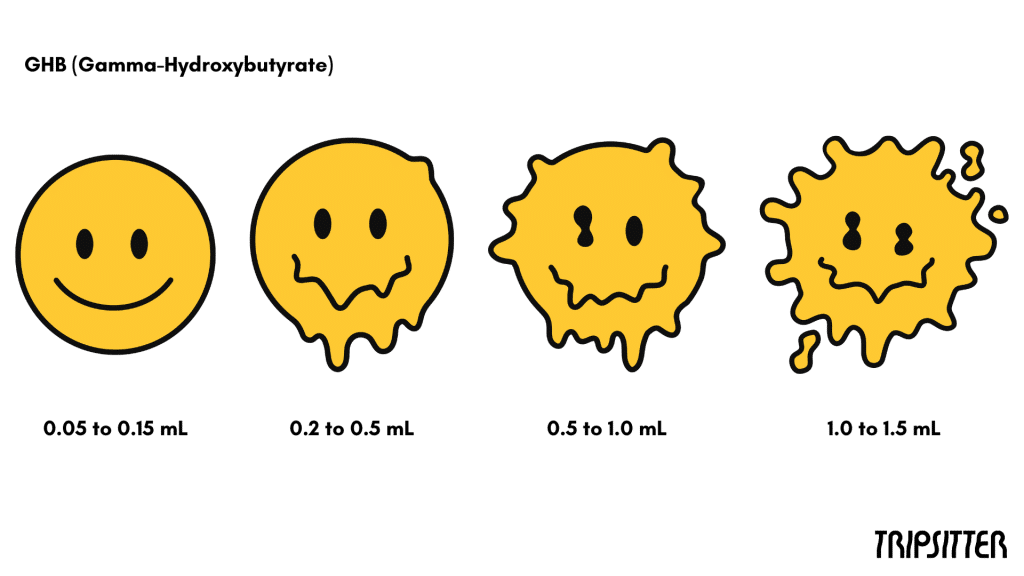
Can You Microdose GHB?
Microdosing is the practice of taking sub-perceptual doses of psychoactive substances. It’s a common practice for people using LSD or magic mushrooms.
Technically, you can microdose anything — including GHB — by simply taking very low doses (usually around 10% of a standard dose). This would mean a microdose of GHB is around 0.05 to 0.15 mL.
Some people claim very small doses of GHB may increase creativity, sociability, and introspection. Others suggest it helps them feel more calm and relaxed thanks to the GABAergic effects.
What Does GHB Feel Like?
GHB is usually referred to as a “combination of MDMA and alcohol.” Users feel drunk and often start to lose muscle coordination like alcohol but also experience an undeniable feeling of euphoria and energy.
GHB is also linked with a heightened libido, auditory or visual hallucinations (in higher doses), and a sense of relaxation and contentedness.
Taking too much GHB often leads to blackouts. Users wake up the following morning with little to no memory of the night before.
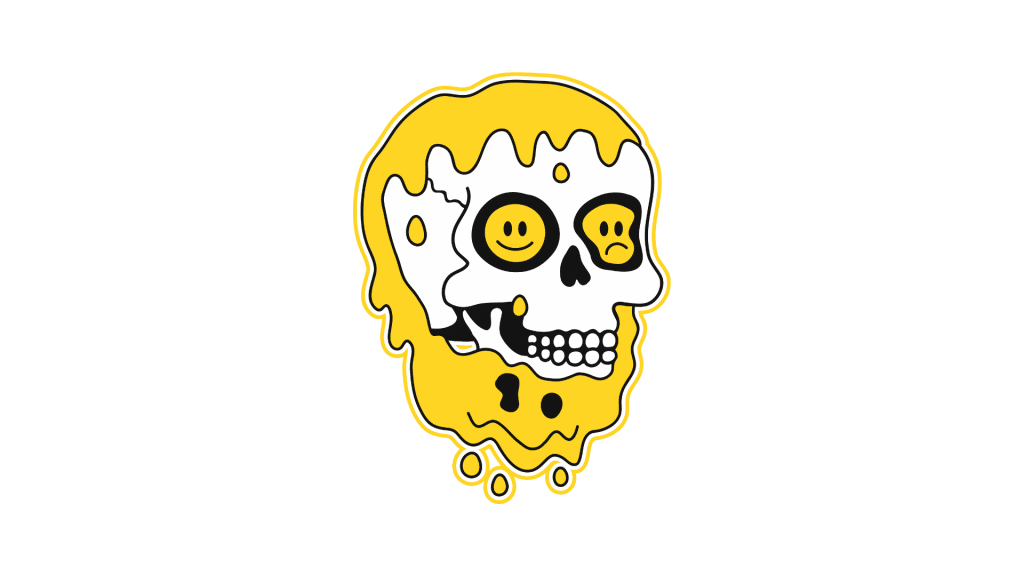
Does GHB Cause a Hangover?
Some people claim GHB doesn’t cause a hangover. While the effects the following day are certainly different from a heavy night of drinking (headache, nausea, lethargy, dizziness), GHB has a clear hangover pattern in people who take moderate to high doses.
The GHB hangover is more similar to MDMA than anything else [1]. This is characterized by a “dull” sensation where users can’t think of the right words and are unable to focus. Many users report feeling unmotivated, lethargic, or insipid.
While the specific reason for the hangover is unknown, the likelihood is that the drug’s effects on the central nervous system (CNS) can cause a temporary dependence on the drug. GHB is known to alter levels of acetylcholine, serotonin, and dopamine in the brain [3].
Most users who do experience GHB hangover symptoms notice them for 12 to 24 hours after the effects wear off. Long-term use could cause longer hangover symptoms for some users.
How Long Does GHB Last?
The effects of GHB peak quickly — roughly 20 to 60 minutes after taking it. For most people, the effects last about 2 or 3 hours before fading away completely.
GHB can remain in the system for up to around 24 hours, but the majority of the drug is processed and removed within 12 hours. Most drug tests aren’t able to pick up GHB, but specialty tests could detect the substance for up to 48 hours.
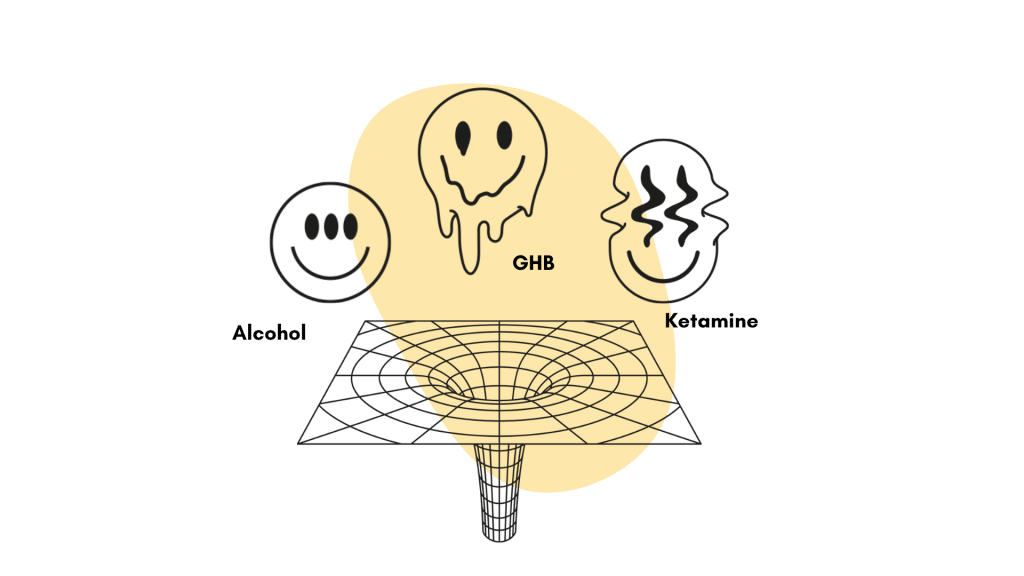
How Strong is GHB Compared To Other Psychoactive Compounds?
GHB is a relatively powerful psychedelic drug, but it doesn’t produce the same distortion of reality that you’d expect from drugs like LSD, DMT, or shrooms. The psychedelic experience most people associate with these drugs — which includes visual and auditory hallucinations — is less intense with GHB.
GHB is more appropriately compared to MDMA, as intense euphoria is typically the most sought-after effect of the drug. Some users consider the euphoria provided by GHB to be more intense and more pleasurable than what they get from MDMA.
A tolerance to GHB can build rather quickly if the drug is taken often. Users need to take increasingly higher doses just to feel the same level of effects. This can lead some individuals to overdose — which can have devastating effects, including unconsciousness, aggression, dangerous behavior, and even death.
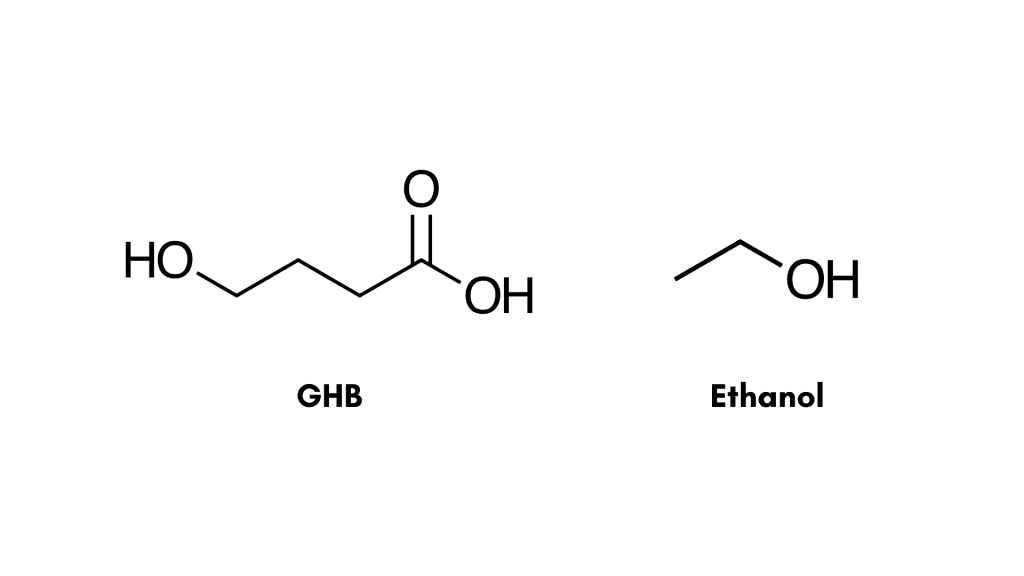
GHB vs. Alcohol
GHB is often regarded as an alternative to alcohol. It causes a similar state of inebriation, increased sociability, and decreased inhibition.
Comparatively, GHB is more relaxing than alcohol, especially at lower doses, and the euphoria is significantly more intense.
Unfortunately, it’s also much easier to overdose on GHB than it is on alcohol, although the effects — including blackout, memory loss, and erratic behavior — are similar.
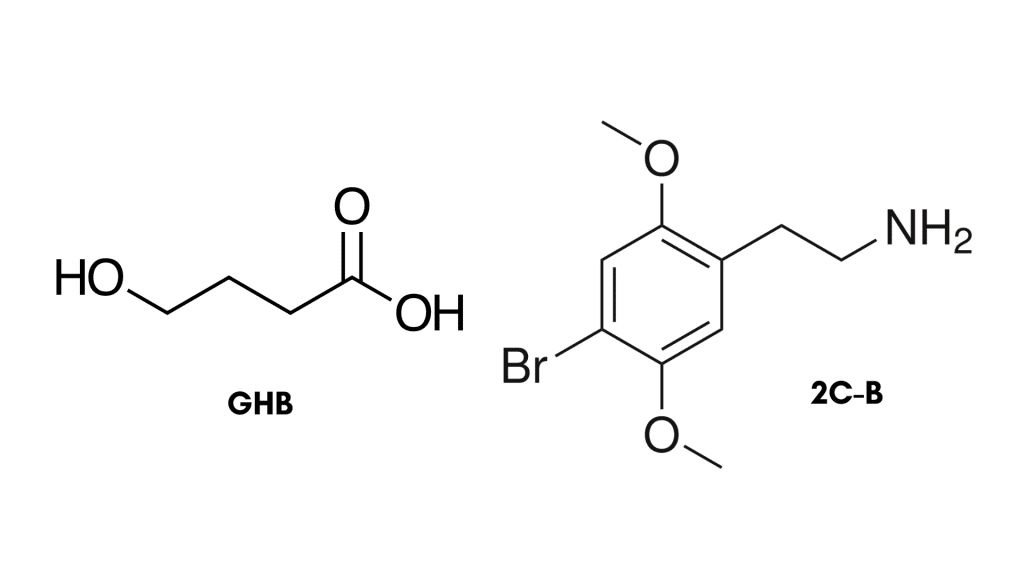
GHB vs. 2C-B
2C-B is a member of the larger 2C-X family of drugs. The 2Cs are all modeled after the natural psychedelic found in the San Pedro or peyote cacti — mescaline.
The effects of 2C-B, 2C-I, 2C-E, or other members of this group share some resemblance to GHB but with some key differences.
Both GHB and 2C-B are considered “party drugs” for their ability to enhance euphoria, sociability, and decrease inhibition. But this is where the similarities end. 2C-B is much more euphoric, more hallucinogenic, and much longer-lasting. The experiences are entirely separate.
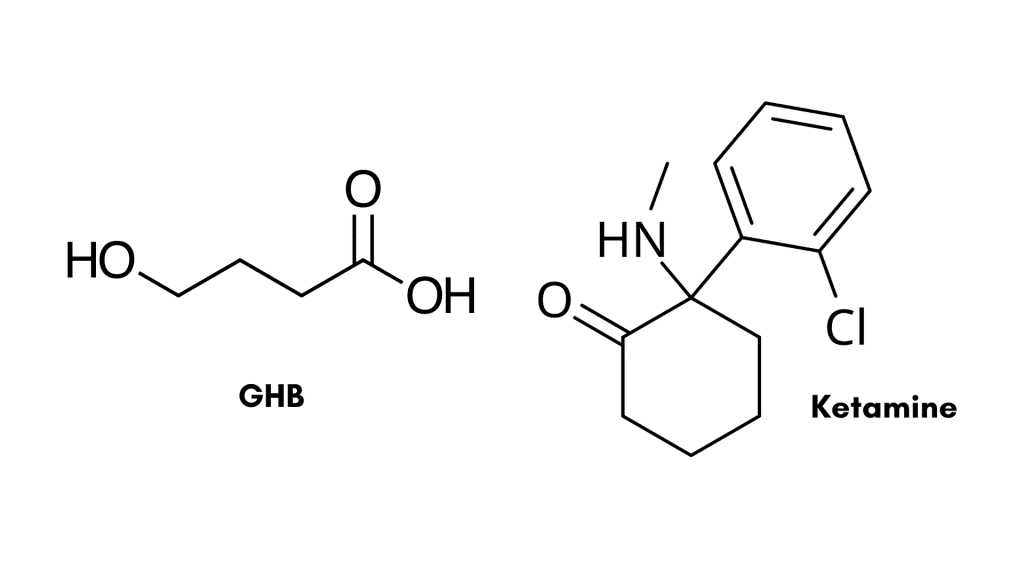
GHB vs. Ketamine
Ketamine is a member of the arylcyclohexylamine class of drugs, which also includes PCP and MXE.
Ketamine, like GHB, is often used as a party drug. In lower doses, it’s comparable to MDMA — enhancing vividness of colors and lights, and producing a state of dissociation similar to alcohol or GHB.
However, the mechanisms these drugs work are entirely distinct. Ketamine is “trippier” than GHB and doesn’t have as much of an effect on sociability or connection with others. In fact, it tends to cause people to turn more inward, experiencing the lights and sounds of their environment from within, rather than deriving the way they feel based on the energy of the people around them.
Is GHB Safe?
As with any drug, GHB can be dangerous — even deadly — if abused or misused.
Hospitalizations after using this substance aren’t uncommon [5,6], and numerous deaths have been reported over the years [7,8,9]
While it’s possible to use this drug safely without lasting negative side effects, it’s extremely important to be conscious of the dose you’re using and to avoid mixing it with other drugs or alcohol.
GHB is very potent. Depending on the dilution, if even 1 mL too much is used, or it’s combined with other central nervous system depressants (including alcohol), the effects can result in serious side effects.
Blood concentrations of 80–100 mg/L produce the desired inebriated effects, while just 300–500 mg/L can result in death [4].
The most common cause of death from GHB overdose is respiratory depression (ineffective breathing) and circulatory collapse (widespread destruction of blood cells and tissue or cardiac arrest).
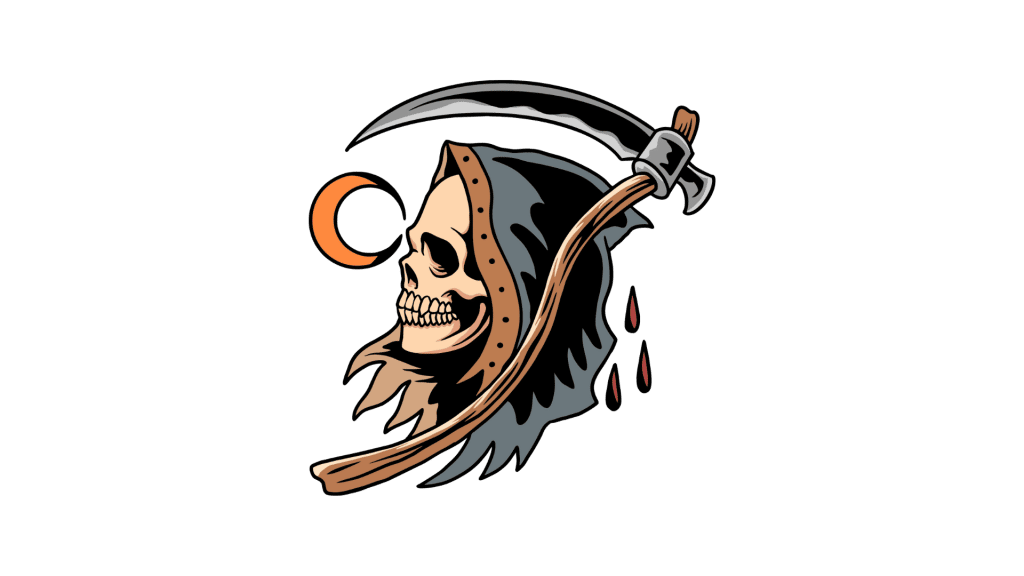
Typical Signs of GHB Overdose
Overdose on GHB happens quickly. This rapidly absorbed compound starts to take effect within about 20 minutes of consuming it and hits peak levels by 60 minutes.
Signs of GHB overdose are often misinterpreted as alcohol intoxication, which can be fatal. Emergency intervention needs to be administered quickly before respiratory depression, or cardiac arrest occurs.
The main cause for alarm with someone you believe is overdosing on GHB is a very low heart rate, dizziness/fainting, and significantly altered consciousness (unable to answer simple questions about who they are, where they are, or what day it is). Vomiting is present in roughly 50% of GHB overdose cases.
Signs of GHB overdose include:
- Disorientation & confusion
- Bradycardia (slow heart rate)
- Hypotension (low blood pressure)
- Hallucinations
- Slurred speech
- Nausea & vomiting
- Miosis (constricted pupils)
- Ataxia (uncoordinated movements)
- Amnesia (sudden memory loss)
- Tremors
- Gaze nystagmus (involuntary eye movement; up and down or left & right)
- Delusions
- Bruxism (jaw grinding)
- Hypothermia (reduced body temperature)
- Altered or absent breathing
GHB Adulteration
GHB is illegal, so the production and sale on the black market are unregulated. It’s used as a prescription drug — called Xyrem — to treat narcolepsy, but the sale of GHB or Xyrem for recreational use automatically classifies it as a Schedule I drug.
Unfortunately, a lack of regulation means that you won’t always know what you’re taking when you consume GHB. It’s often made illegally by combining GBL (gamma-butyrolactone) with dangerous chemicals present in drain cleaner or lye. These chemicals can be dangerous or even deadly to consume.
GHB Drug Interactions
GHB is a rather potent central nervous system depressant, so combining it with any other depressants — including alcohol — can be quite dangerous. Despite GHB being a party drug in many cases, it should never be mixed with any other substances. Breaking this rule is one of the most common causes of overdose on GHB.
GHB Side Effects
GHB can produce a number of side effects, and the risk of most is based on the dose and the frequency with which the user takes the drug.
Small doses that aren’t mixed with other substances often cause minor side effects like a slowed heart rate. Moderate doses are more likely to cause headaches and nausea. High doses are the most dangerous, as they can cause vomiting, loss of consciousness, impaired motor skills, and a complete loss of inhibition.
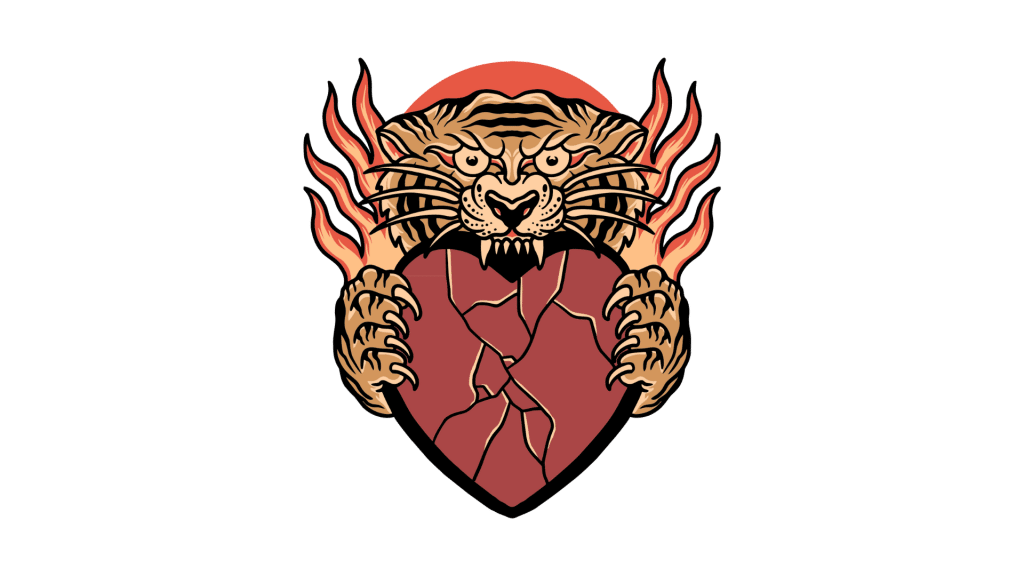
Is GHB Addictive?
Yes, GHB can be addictive. The drug affects the levels of several neurotransmitters in the brain, including serotonin, dopamine, and GABA. Any substance that affects your brain chemistry can become addictive. Most GHB users take the drug infrequently enough that dependence doesn’t develop, but regular use can quickly lead to addiction.
Withdrawal from GHB can be quite challenging, sometimes causing seizures, depression, and even death. GHB dependency should be taken very seriously and should be avoided at all costs.
The first signs of GHB withdrawal usually appear about 24-hours after the last use and can last anywhere from 24 hours to 7 days, depending on the level f dependency.
GHB withdrawal symptoms:
- Abdominal cramps
- Anxiety
- Diarrhea
- Insomnia
- Hypertension
- Nausea
- Restlessness
- Sweating
- Tachycardia
- Tremors
- Vomiting
- Hallucinations & delusions (rare)
- Rhabdomyolysis (rare)
- Seizures (rare)
Is GHB Legal?
No, GHB has been listed as a Schedule I drug in the United States since 2000 and the European Union since 2001 — meaning the sale, possession, and use of this substance are strictly prohibited.
There is a prescription-only form of GHB called Xyrem used to treat narcolepsy. Under the care of a physician, Xyrem is legal. Selling Xyrem is considered a felony offense.
How Does GHB Work?
GHB primarily acts on the GABA receptors, which exerts an inhibitory action on the central nervous system [2].
This is a similar mechanism of action used by alcohol and benzodiazepines, but with one subtle difference. Ethanol and benzodiazepine hypnotics work on the GABA A subtype, while GHB works on the GABA B subtype [10]. GABA A has a faster but short-lived action, while GABA B has a slower but longer-lasting inhibitory effect.
GABA works like the brake pedal of the nervous system. It works to slow down nerve transmission and reverse the stimulating effects of glutamate or other stimulating neurotransmitters. Other GABAergic compounds like benzodiazepines are used to reduce neurological activity in order to facilitate sleep or treat anxiety.
Agonism of the GABA receptors can also result in intoxication. As a result, GHBs effects on GABA are responsible for its ability to produce feelings of relaxation (in low doses), increased sociability and inebriation (in moderate doses), and anesthesia (in higher doses).
Finally, GHB can increase the activity of GABA receptors in the brain, which can lead to sedation and relaxation.
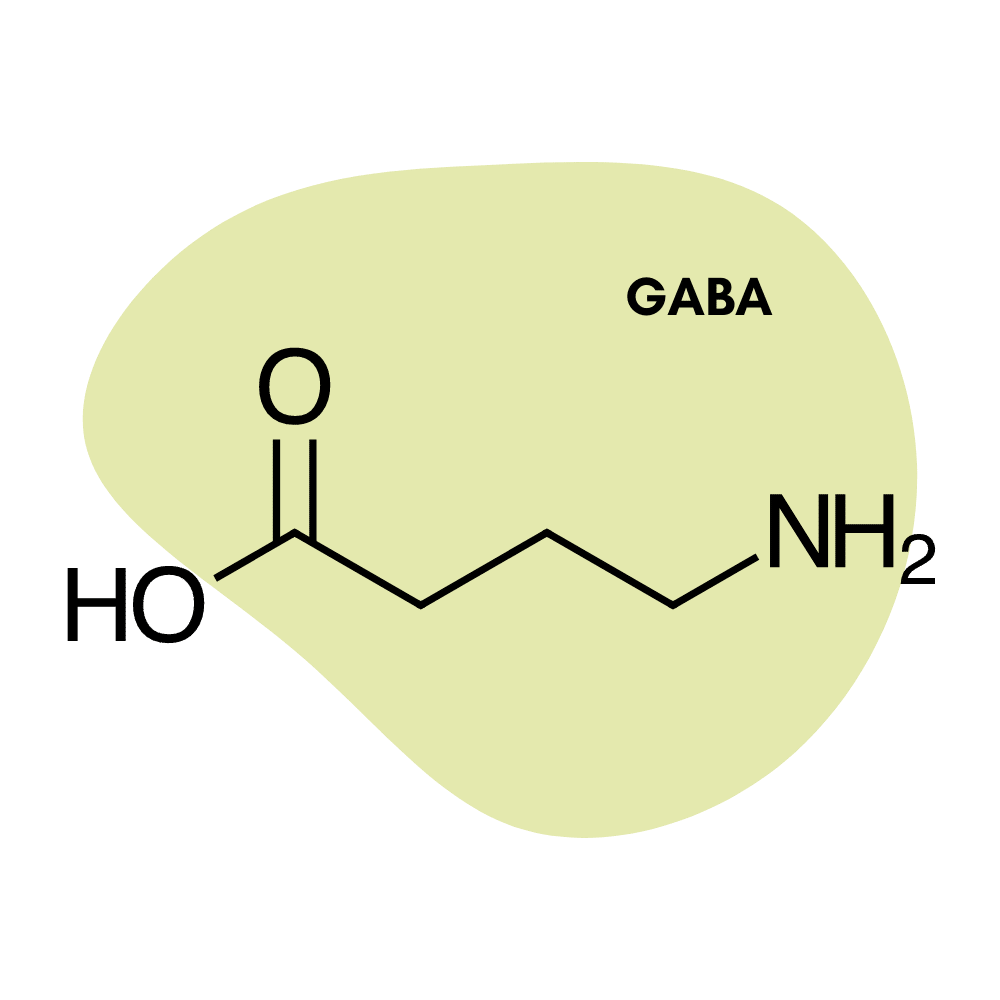
Frequently Asked Questions About GHB
Below are some of the most common questions people have about GHB.
If there’s something we’ve missed, send your questions to high@tripsitter.com so we can keep this updated.
1. Can You Get Addicted to GHB After One Use?
There isn’t any evidence to suggest that GHB is habit-forming or addictive after just one dose. Most people who take GHB take it sparingly.
While it’s very unlikely for someone to become physically addicted to GHB after a single session, it’s possible for someone to become fixated on the effects of GHB and feel a compulsive desire to use it again.
Some people are more likely to become addicted to mind-altering substances than others. Individual physiology, mental health status, and cultural factors can all influence one’s odds of becoming addicted to GHB or other substances.
2. Is GHB Dangerous?
GHB can be quite dangerous because of how minuscule the differences are between a recreational dose and a lethal dose. GHB is also much more dangerous when mixed with other hypnotic or sedative drugs as well as alcohol. Because of the context in which this drug is most often used (at clubs, bars, or raves), the chances of someone mixing GHB with other substances without understanding the consequences are high.
3. When Was GHB Invented?
The prodrug of GHB, GBL (γ-butyrolactone), was invented in Russia in 1874 by the chemist Alexander Saytzeff [11].
Nothing happened for nearly 100 years until the late 1960s, when Dr. Henri Laborit began studying it in more detail. He noticed similarities in the structure of GHB and GABA — the brain’s primary neuroinhibitor. He believed GHB might be able to increase GABA levels in the brain, which could be useful in the treatment of anxiety, insomnia, and various psychiatric conditions.
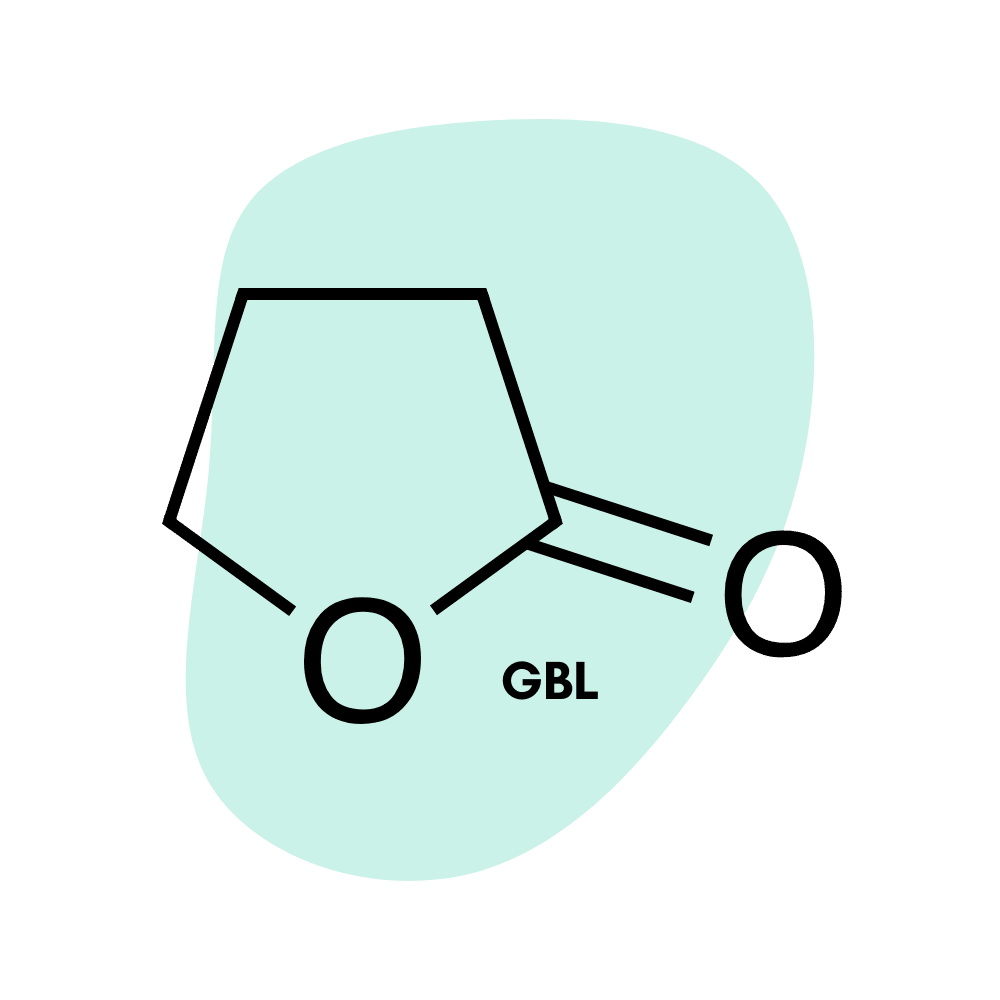
4. Is GHB Formed During Ketosis?
GHB is not produced naturally in the body. However, it’s an isomer of β-hydroxybutyrate (BHB), which is one of the primary ketones produced by the body during starvation states. It serves as an alternative source of fuel when glucose levels are depleted.
In the 1980s and 90s, GHB was used by bodybuilders and dieters as it was believed to facilitate fat loss. It’s likely this effect came from its similarities to BHB, which at the time wasn’t well understood.
Let’s be clear, GHB has never been proven useful for supporting fat metabolism or weight loss.
It remains unclear about the potential effects of GHB and BHB on brain function as a result of ketosis.
Final Thoughts: What is GHB?
GHB — gamma-hydroxybutyrate — is most commonly compared to alcohol and MDMA. At normal doses, it provides a similar level of relaxation to alcohol but with a much more intense body high. It also produces a euphoria that is a bit less intense than what you’d get from ecstasy but with a strong boost in sexual desire and sociability.
GHB can be dangerous and even deadly if taken in high doses, and it can cause users to become addicted and suffer unpleasant withdrawal symptoms if it’s used too often.
The key thing to remember if you decide to use GHB is to make sure you’re 100% confident about the dose and avoid mixing it with ANY other substances — especially CBS depressants like alcohol, phenibut, or benzodiazepines.
References
- van Nieuwenhuijzen, P. S., Kashem, M. A., Matsumoto, I., Hunt, G. E., & McGregor, I. S. (2010). A long hangover from party drugs: Residual proteomic changes in the hippocampus of rats 8 weeks after γ-hydroxybutyrate (GHB), 3, 4-methylenedioxymethamphetamine (MDMA) or their combination. Neurochemistry international, 56(8), 871-877.
- Allen, M. J., Sabir, S., & Sharma, S. (2018). GABA Receptor.
- Bosnjak Kuharic, D., Vukojevic, J., Zaja, N., Arbanas, G., & Puljic, A. (2019). GHB roller-coaster: serotonin syndrome and withdrawal. Psychiatria Danubina, 31(3), 371-373.
- P Busardo, F., & W Jones, A. (2015). GHB pharmacology and toxicology: acute intoxication, concentrations in blood and urine in forensic cases and treatment of the withdrawal syndrome. Current Neuropharmacology, 13(1), 47-70.
- Galicia, M., Nogue, S., & Miró, Ò. (2011). Liquid ecstasy intoxication: clinical features of 505 consecutive emergency department patients. Emergency Medicine Journal, 28(6), 462-466.
- Elliott, S. P. (2004). Nonfatal instances of intoxication with γ-hydroxybutyrate in the United Kingdom. Therapeutic drug monitoring, 26(4), 432-440.
- Schep, L. J., Knudsen, K., Slaughter, R. J., Vale, J. A., & Mégarbane, B. (2012). The clinical toxicology of gamma-hydroxybutyrate, gamma-butyrolactone and 1, 4-butanediol. Clinical Toxicology, 50(6), 458-470.
- Anderson, I. B., Kim, S. Y., Dyer, J. E., Burkhardt, C. B., Iknoian, J. C., Walsh, M. J., & Blanc, P. D. (2006). Trends in γ-Hydroxybutyrate (GHB) and related drug intoxication: 1999 to 2003. Annals of emergency medicine, 47(2), 177-183.
- Zvosec, D. L., Smith, S. W., & Hall, B. J. (2009). Three deaths associated with use of Xyrem®. Sleep medicine, 10(4), 490-493.
- Wong, C., Chan, K. F., Gibson, K. M., & Snead, O. C. (2004). γ-Hydroxybutyric Acid. Toxicological reviews, 23(1), 3-20.
- Saytzeff, A. (1874). 4. Ueber die Reduction des Succinylchlorids. Justus Liebigs Annalen der Chemie, 171(2), 258-290.

